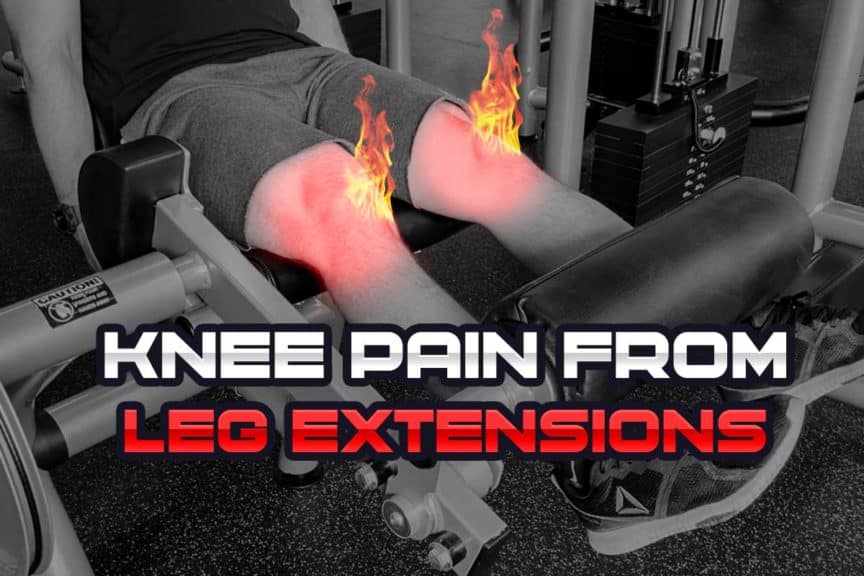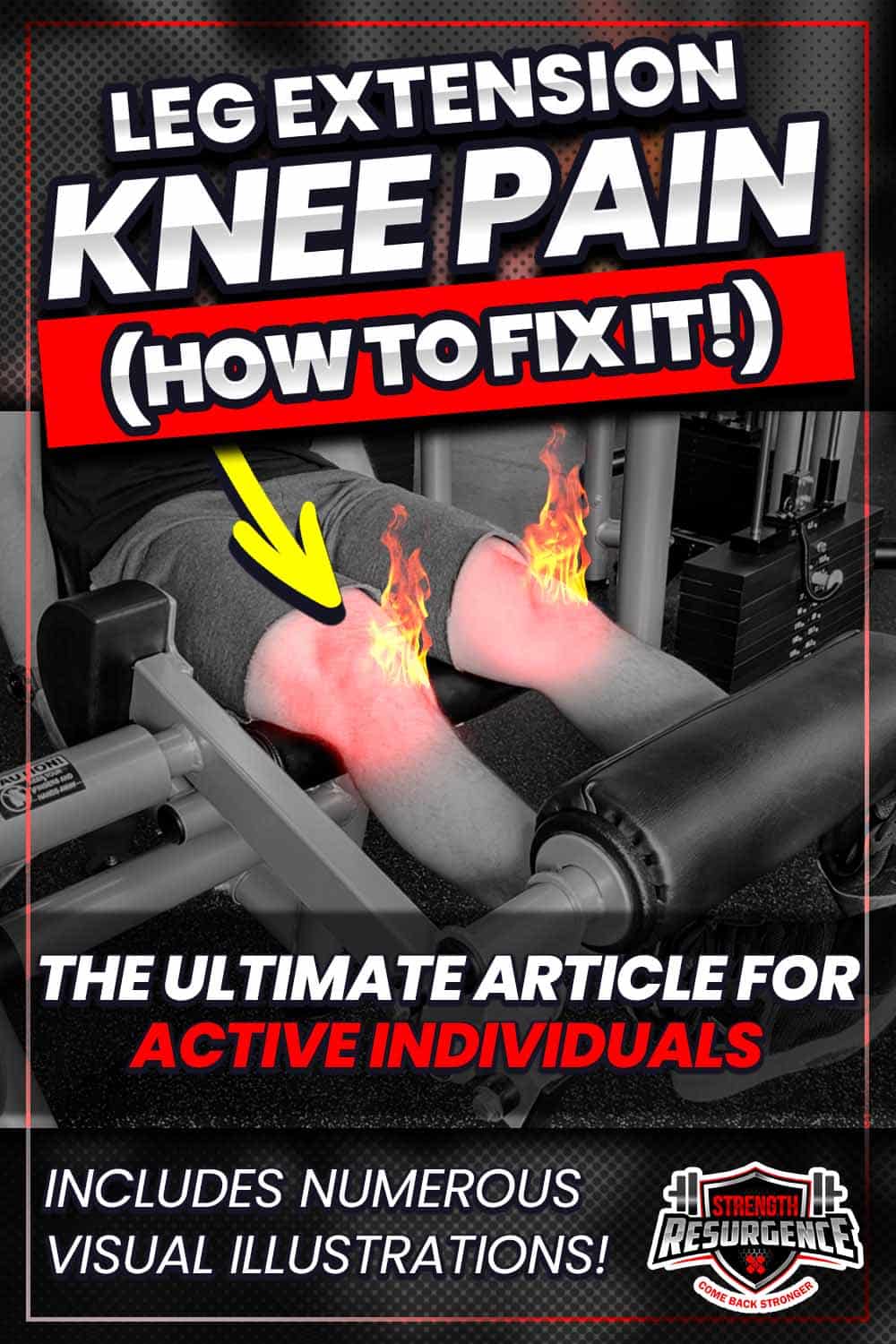The leg extension machine is an age-old machine found in nearly every gym — and it’s about as popular as it is controversial. Some lifters love it and swear by it, while others insist that people need to avoid it like the plague (you likely don’t, if you’re smart with it). If you have knee pain after using the leg extension machine, this article will walk you through the most common reasons for why it occurs, how to get it under control, and how to make sure it never happens again.
Knee pain from leg extensions is often the result of overloading the quadriceps tendon or the patellar tendon. It can also be due to poor kneecap mobility or joint health. Solutions involve appropriate tendon loading, improving tissue mobility and proper strengthening of surrounding tissues.
A basic rundown on knee anatomy, common issues experienced with this piece of equipment, and specific training strategies will go an exceptionally long way when it comes to likely allowing you to continue using this piece of equipment for years to come. Invest a little time into this article, and you’ll hopefully get some significant dividends as a result. So, if that sounds good to you, keep on reading!
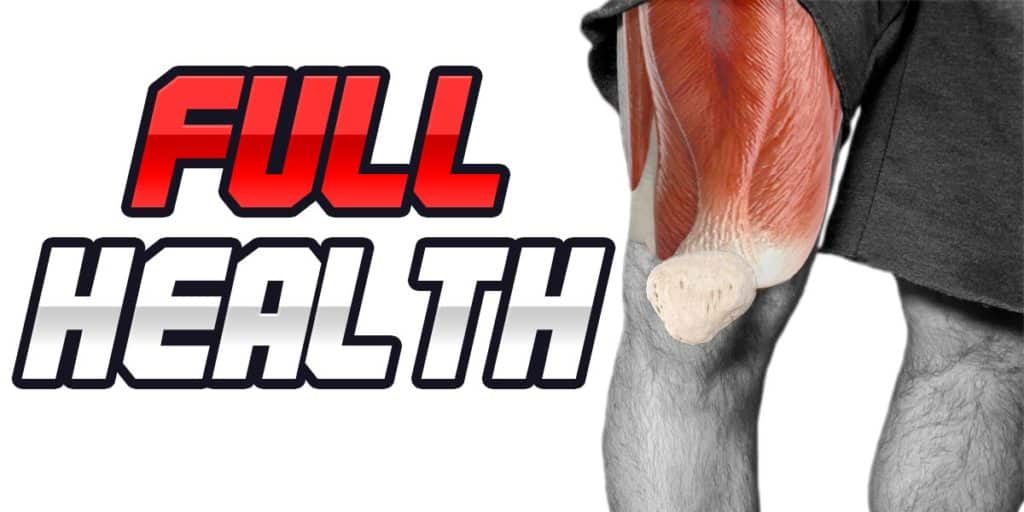
Related article: Reverse Nordics and Knee Health: What You MUST Understand
Disclaimer: While I am a physical therapist, I am not YOUR physical therapist. As a result, I cannot tell you whether or not leg extensions or any variations may or may not be appropriate for you. By following any information within this post and on this website, you are doing so at your own risk. You are advised to seek appropriate medical insight from a qualified healthcare professional for any pain you may be experiencing.
Want to be able to perform leg extensions by hooking up a dumbbell to your feet? Check out my review above if you’ve never heard of the MonkeyFeet! It’s a really cool (and simple) piece of equipment! You can use the discount code “strengthresurgence” on the Animalhouse Fitness website for 10% off any of their products!
As we kick things off here, remember that no individual machine (or exercise) is ideal for every single human being. But in the case of the seated leg extension machine, it can often be made more appropriate for many otherwise healthy lifters and active individuals by making some individualized modifications.
There’s a lot to unpack here, but the takeaway is this: take time to figure out your knee pain (what aggravates it, what eases it, what the pain feels like, etc.) and then ask yourself if you’re making any of the mistakes that I outline below. From there, you’ll likely have a good understanding of how to go about initiating and making the changes required to get things under control.
It can take time for leg extension-induced knee pain to subside and health to be restored, but it can absolutely happen if you’re diligent enough to stick with it for a certain length of time.
Alright, here we go!
Basic knee anatomy (must know)
When it comes to strength training, unnecessary pain is the enemy. To defeat the enemy, you must know the enemy. This all starts with a very rudimentary understanding of some of the common anatomical structures in and around your knee. A little truly does go a long way here.
You don’t need to be a medical expert here, but if you understand the basics of the following anatomical structures, navigating and eliminating your knee pain will be a much less frustrating and much quicker process.
The quadriceps tendon & patellar tendon
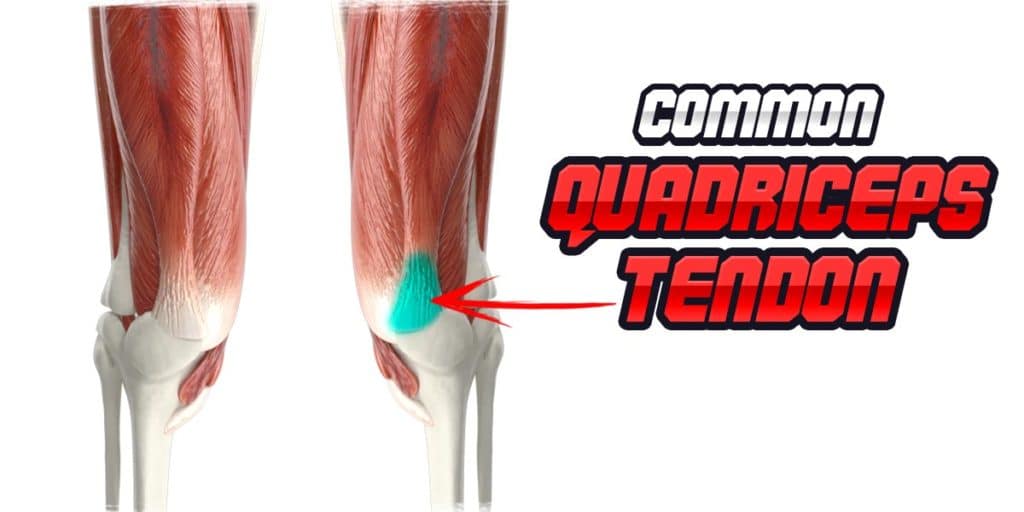
The common quadriceps tendon is the thick, gristly piece of tissue that anchors the bottom end of all four quadriceps muscles onto your kneecap (the patella), where it engulfs the entire bone. From there, it continues on to become the patellar tendon, where it anchors down onto the upper portion of your shinbone (the tibia).
Fun fact: Although almost always called the patellar tendon, anatomists will often refer to this structure as a ligament and not a tendon since it technically runs from one bone to another without any muscular tissue in between. Just a fun FYI.
Both the quadriceps tendon and the patellar tendon are susceptible to becoming unhealthy and producing discomfort or pain, particularly through a condition known as tendinopathy. Thankfully, it’s often relatively straightforward to treat — but it takes time and appropriate dosing of exercise parameters (more on that later).
The patella
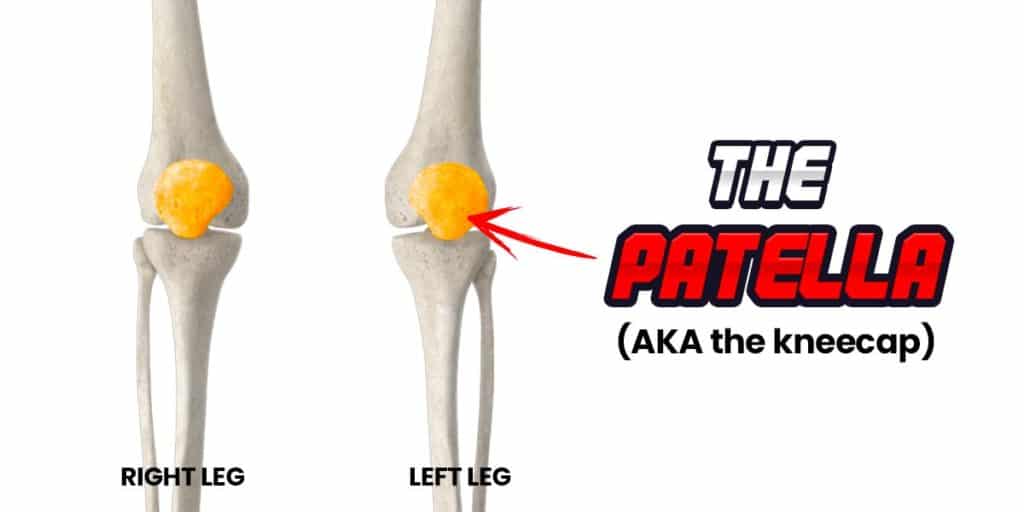
Your patella (kneecap) exists to help increase the mechanical efficiency of straightening your knee. Without it, you wouldn’t be able to produce nearly as much force when straightening your knee against resistance. Pretty nifty little bone, eh?
The patella has a soft underside (made of cartilage), which should fit nicely in a little groove between the two condyles of the femur, which is known as the intercondylar eminence. When your quads contract, they pull the kneecap directly upwards (via the quadriceps tendon), where it should happily oblige, staying in its little groove and producing pain-free knee extension.
It’s not uncommon for the patella to lack adequate mobility or for it to be pulled laterally (out to the side) just enough so that its underside rubs against the side of the groove it sits in. This sideways pulling can be present at rest or when contracting your quads (i.e. straightening your knee).
The result tends to be a sharp or burning sensation of pain beneath the kneecap, known as retropatellar pain. This condition is often known as patellofemoral pain syndrome (you’ll often hear it called “runner’s knee”).
If the issue persists long enough, it can lead to deterioration of the cartilage, resulting in a condition known as chondromalacia patellae.
Dealing with this specific issue will be discussed later in this article.
Knee cartilage
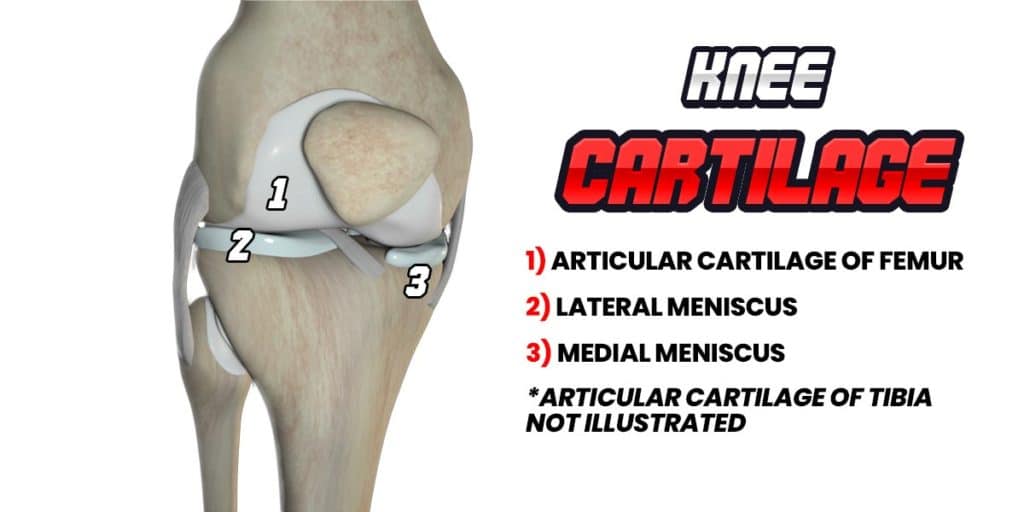
Cartilage is a type of tissue within the body that covers and protects specific structures. Certain types of cartilage in the knee helps to provide smooth surfaces for pain-free and healthy joint articulation (movement), while other types of cartilage in the knee help to absorb force impacts, like shock absorbers, from the effects of gravity when walking and running.
There are four primary structures comprised of cartilage within the knee:
- The articular cartilage of the femur
- The articular cartilage of the tibia
- The articular cartilage of the patella (underside of patella)
- The medial and lateral meniscus (plural = menisci)
When the articulating surfaces of bones become chronically unhealthy, a specific type of arthritis can occur, known as osteoarthritis. If the underside of the kneecap becomes unhealthy, it can result in chondromalacia patellae.
Keep on reading to learn how to deal with cartilage-based issues.
Sources of knee pain (and solutions)
As I briefly talk about why the leg extension machine can be painful on the knees, let’s keep a few things in mind:
I can’t address every single source or cause of knee pain within a single article, so I will only mention the most common issues. If you’re generally healthy without any previous history of knee issues, some (or all) of your pain is likely from one of the following factors — but it’s certainly no guarantee.
Also, there’s no rule saying that an individual’s pain or discomfort can only be from one structure. There may be multiple sources at play that are acting as pain generators. Nonetheless, in clinical practice, I tend to find that there is often one structure that contributes to an individual’s pain more than others when concomitant structures or pain mechanisms are also involved.
Related article: Why You Have Reverse Nordic Knee Pain (And How to Fix it)
Tendinopathic quadriceps & patellar tendon
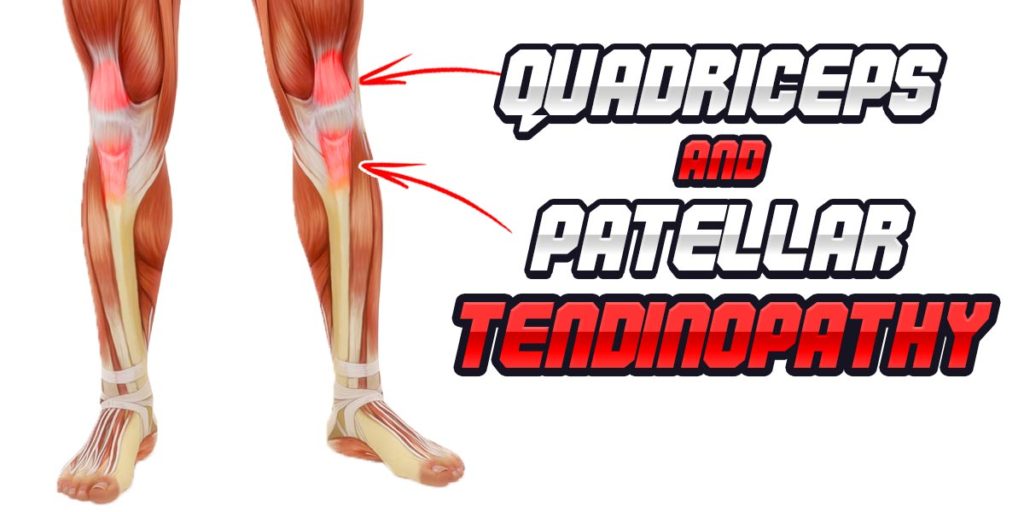
Tendon-based injuries and pain are incredibly common and prevalent in individuals all over the world. It accounts for approximately 30% of all visits to orthopedic healthcare specialists.1
Unhealthy tendons generally produce an aching-type pain that is more dull than sharp and somewhat diffuse in nature (it’s not a sharp or very focal sensation). They tend to stiffen up when sitting still for prolonged periods and feel better when they’ve been getting low-grade movement.
Quadriceps tendon pain or discomfort is typically felt above the kneecap, and patellar tendon pain is generally felt all over the tendon itself. If you find that sometimes you can perform your leg extensions (or other exercises) relatively pain-free, but at other times the gnawing, aching or burning pain is present, it could indicate that your tendon(s) have some form of tendinopathy present.

The solution for unhealthy tendons
To get chronically unhealthy tendons back on track to complete health, you have to stimulate (load) the tendon, but in an appropriate manner. If you load it too much, you’ll irritate it and essentially make it worse. Load it too little, on the other hand, and it won’t get the message that it needs to get healthier.
Whether it’s by using the leg extension machine, or another exercise that directly challenges these tendons, the goal is to select a load/resistance that’s typically relatively light if the tendon is quite sensitive or unhealthy) and to then minimally recreate some of the discomfort you usually feel. The keyword here is minimally.
If we use a pain scale of 0-10 (10 = worst pain ever), a perceived discomfort of around 2 is all we need (note, it should be perceived as discomfort and not pain).
Once you’ve drummed up that low level of discomfort, you want to perform a few sets of the exercise (2-3) with around 10-12 reps per set. If all goes well, your soreness/discomfort will drop from a 2 down to a 1 or zero when you’ve finished your final set. This indicates that you’ve stressed the tendon appropriately.
If the discomfort remains at around a 2, this is permissible, and within a few more sessions, you should definitely feel the discomfort drop down at the end of the third set.
The level of discomfort should never increase during these tendon-loading exercises. If it does, it indicates that too much stress is likely occurring to the tendon(s).
In another 24-48 hours, repeat the same process. Keep using a resistance that drums up a slight bit of discomfort (as the tendon gets healthier, it will take more and more resistance to do this). Ride this process out until you can go full strength without drumming up any discomfort, which indicates the tendon is back to complete health. This can take weeks to months, depending on how unhealthy the tendon initially is.
Patellar tracking issues
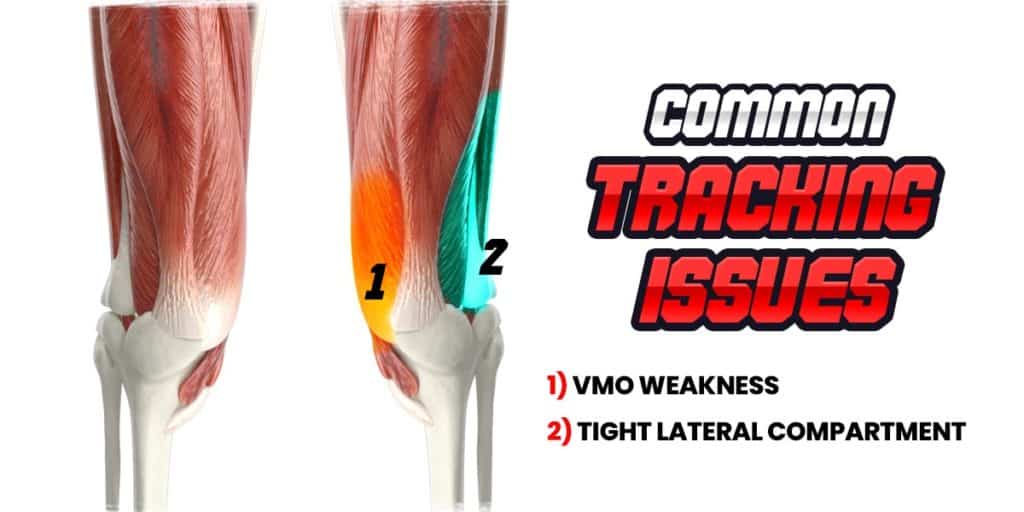
The most common reason for mal-tracking of the patellar tendon to occur in an otherwise healthy knee is believed to be due to imbalances of strength and tissue mobility between the vastus lateralis (the outer quad muscle) and the vastus medialis (the inner quad muscle).2–4
Specifically, the lateral compartment of the thigh can be rather tight and lacking in suppleness. In contrast, the inner thigh lacks adequate strength. The result is an uneven amount of pulling force between the inside and outside edge of the patella, causing it to be pulled outward enough to disrupt ideal tracking (which creates friction, rubbing and ultimately irritation on the underside of the kneecap itself).
Related article: Tight Kneecap? Get it Moving with These Techniques (Way Less Pain)
The solution to patellar tracking issues
To get your patellar tracking restored, you’ll likely want to opt to mobilize the tissue on your outer thigh (loosen it up) while strengthening the inner quad muscle. This will hopefully lead to equalizing the pulling forces on your kneecap, allowing the patella to sit within its groove during knee movements.
To begin working on your outer thigh tissue mobility, you can opt for techniques such as foam rolling or barbell rolling these muscles or have a healthcare professional perform IASTM or other manual therapy techniques to areas requiring work.
Targeting the inner portion of the quadriceps muscle for strengthening can be a bit tricky, but a good starting point is to check out my article on a rather specific style of wall sit that has been shown within literature to be very effective at improving the activation of this muscle. You can check it out here:
Related article: Activate & Strengthen Your VMO With This Science-proven Exercise
Cartilage & joint health
Improving the health of cartilage can often be quite challenging, as the type of cartilage within the knee has a horrible blood supply, making it hard for damaged or unhealthy cartilage cells (chondrocytes) to get the oxygen, nutrients and other substances they require for healing.
As a result, you’ll likely have to opt for leg exercises that keep your knees moving but without creating any knee pain in the process. Read onwards as to how to go about doing this.
Osteoarthritis of the knee
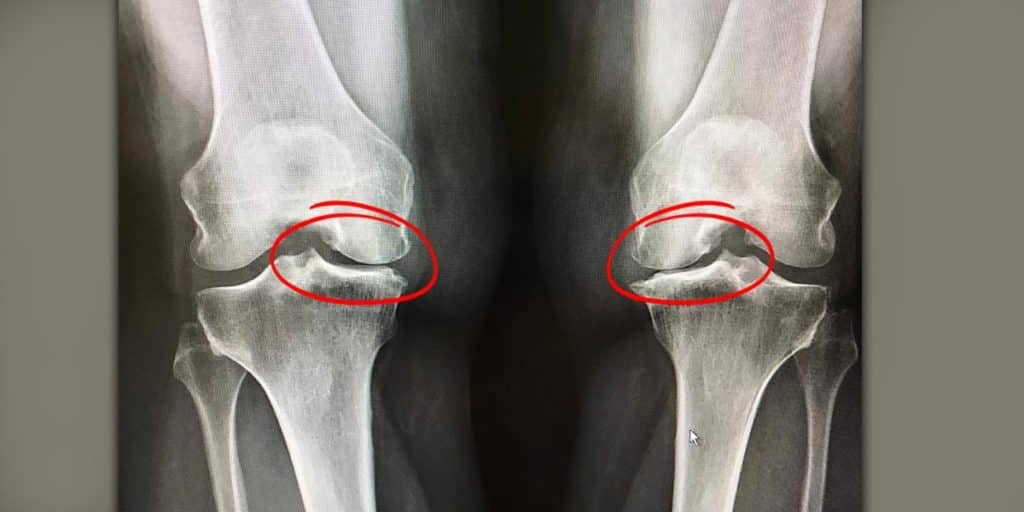
Osteoarthritis of the knee results from a breakdown of the cartilage on the end of either the femur or the tibia. It becomes more common as we age and most often presents as pain right on the joint line of the knee. Osteoarthritis on the inside (medial) knee portion is usually the first area where it rears its ugly head.
X-rays are the go-to for ruling in (or out) arthritic changes within this joint.
As mentioned earlier, if you have an arthritic knee, you have to find ways to keep the joint moving without flaring the pain. This helps decrease pain and nourish the joint, which provides it with the nutrients and substances that the cartilage receives via the synovial fluid within the joint. Thankfully, a rather promising training intervention has become more prominent over the last decade for those with arthritic knees who are dealing with this challenge. Check out the solution below to learn more!
The solution for arthritic knee pain
If your knee(s) can’t tolerate performing heavier, more challenging resistance exercises, such as leg extensions, you might want to read up on blood flow restriction training. This form of training has been shown to be very effective at allowing individuals with knee arthritis to strengthen their legs and increase leg muscle mass without the need to lift heavy.
I have used it on numerous patients (who are appropriate for its use) within my clinical practice, with high success rates.
If you want to learn how to incorporate this training methodology into your health and fitness pursuits, be sure to read through the “very effective variations” section of this article to get all of the exciting details!
Chondromalacia patella
Since the underside of the patella is made from cartilage, this condition technically belongs in this section, but I’ve already talked about it in the patellar tracking issues section above, so you can read about it there.
Meniscal tears
Since the menisci are a type of cartilage within the knee, and since they’re not uncommon, they’re briefly worth mentioning. However, they are largely out of the scope of this article.
Meniscal tears can range from asymptomatic to highly disabling (in terms of pain and dysfunction). If you have a problematic tear in one of your menisci, you likely have a hard time with other knee-dominant exercises and experience the same symptoms of pain with them as with the leg extension machine.
Solutions for dealing with meniscal tears
If you have reoccurring pain or dysfunction in your knee due to a meniscal tear, seeking insight from a qualified orthopedic physical therapist or other such healthcare practitioner is your best bet here. There’s simply too much variability in how to best proceed with your training and knee rehabilitation for me to cover within this article.
Common leg extension mistakes
Mistake 1: Inappropriate loading parameters
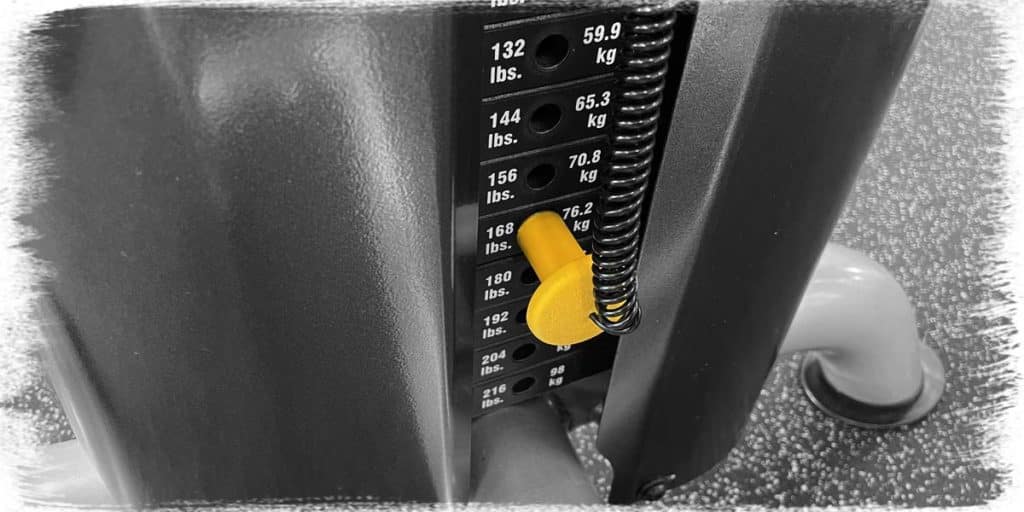
The quick way to sum up this common mistake is: “The spirit is willing, but the body is weak.” In other words: sometimes our ambitions and desires to become stronger and healthier outpace or overpower what the physical structures in our body can keep up with.
The heavier the resistance used with leg extensions, the greater the stress placed on each quadriceps tendon and patellar tendon. Like any other tissue in our body, these structures are susceptible to mechanical overload, creating stress and strain that lead to irritation and pain.
Yes, we need mechanical overload to make adaptations in muscle and tendon strength, but this overload must be within appropriate amounts. If some overload is good, more is not necessarily better.
This is best illustrated by the stress-strain curve, a mechanical engineering and biomechanical modelling construct that illustrates how materials (such as knee and quad tendons) tolerate (and respond to) different levels of stress and strain.
Unless you’ve physically snapped your quadriceps or patellar tendon, you haven’t taken anything to absolute mechanical failure. Still, chronically heavy loads will put you on the upper end of the curve, which will wreak havoc on the physiological health of the tendons, especially without adequate periods of recovery in between.
The solution: Learn the alternative ways to challenge your muscles on this machine without the need to use ultra heavy resistance (discussed later on in this article).
Mistake 2: Inappropriate training volume
Even if you don’t use excessive or inappropriate amounts of weight/resistance when performing your leg extensions, it’s still entirely possible to overload what your knees can tolerate. This can occur if you’re performing too much training volume.
Training volume refers to how much work is performed during a workout or for a specific exercise. There is actually a way to calculate it:
Training volume = poundage lifted x sets performed x repetitions performed
This means that tendon overload can occur when using ideal amounts of resistance but excessive amounts of sets and/or repetitions.
And while you might experience some knee discomfort if doing too many sets or reps for an individual workout, you’re more than likely going to experience knee pain or discomfort if you repeatedly make this mistake workout after workout.
The solution: Use the concept of minimal effective dose (discussed below) so that you adopt the mindset of training to stimulate, not annihilate. Remember, you do not grow or become stronger in the gym — you grow and become stronger with rest and recovery. You simply use your training sessions to stimulate your tissues to initiate the process.
Minimal effective dose
Many individuals make the mistake of thinking, “if some is good, then more is better.” This can often get an individual in trouble when it comes to experiencing knee pain on the knee extension machine; they simply do too much.
It’s best to follow the concept of minimal effective dose when it comes to resistance training. This just means doing the minimal amount of training required to fully elicit the training response you’re after. It has found to be an effective strategy for improving strength-based outcomes without compromising other aspects of performance or health.5
Think of it this way: If you have a headache and can get rid of it entirely by taking a single 81mg tablet of aspirin, why would you want to take 324mg (6 tablets)? Too much training can have adverse effects, just like too much medicine.
Very effective extension variations
Now that we’ve talked about why pain is commonly incurred with seated leg extensions, we had better talk about how it can often be avoided while still delivering appropriate stimulation to the muscles during the movement.
Many lifters and individuals give up on performing leg extensions altogether when they experience knee pain at higher loads or intensities of this exercise. They erroneously think that if they can’t go heavy (due to pain), there’s no other way to perform this exercise while experiencing strength or hypertrophy (muscle size) gains.
But thankfully, that’s not always true; if we can make the muscles work just as hard (or perhaps even harder)while using less weight (below the threshold for the onset of knee pain), we just might be able to still use this machine for strengthening the quads while sparing the tissues around the knees themselves.
Give the following variations a try and see if they make a difference for you!
Time under tension training
Time under tension training is often referred to as tempo training. It involves performing an exercise at slower movement speeds for a certain amount of time instead of a certain number of repetitions.
The rationale is that exposing a muscle or group of muscles to mechanical stimulation for continual and longer durations can yield significant increases in muscle strength and hypertrophy. And thankfully, there’s scientific evidence to suggest this type of training can be a great way to trigger muscle hypertrophy.6,7
What’s great about this is that you’ll need to use much lighter loads to perform tempo training than what’s traditionally used for strength and hypertrophy gains.
As a result, if your knee pain only rears its ugly head using higher loads, it’s certainly possible that you can avoid provoking your knee pain while still providing effective stimulation to your quadriceps.
To perform tempo training
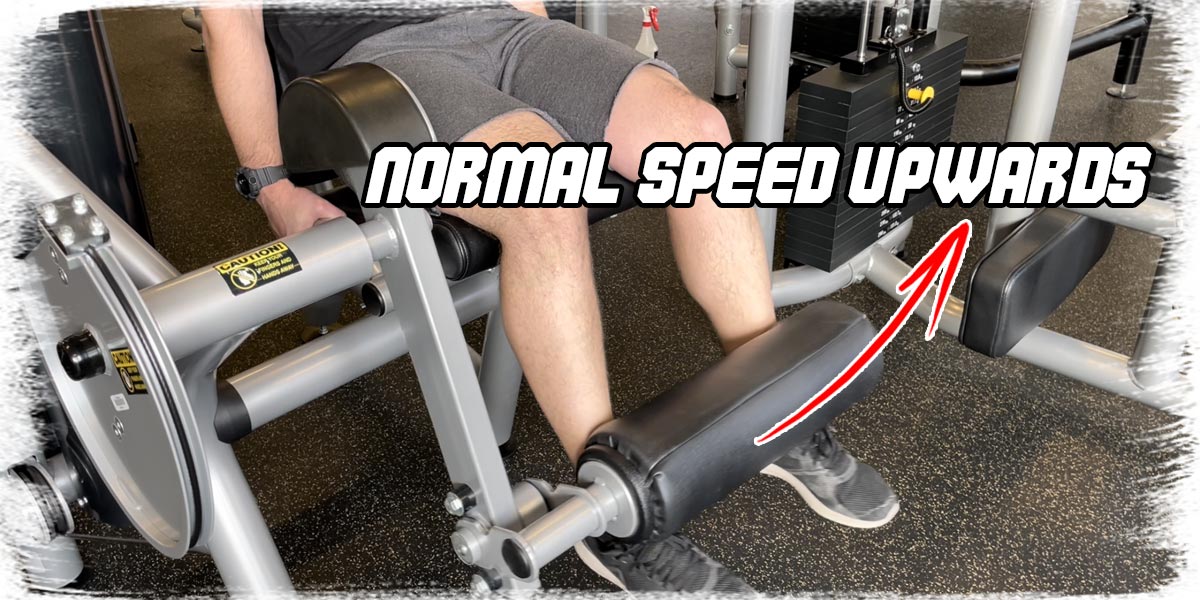
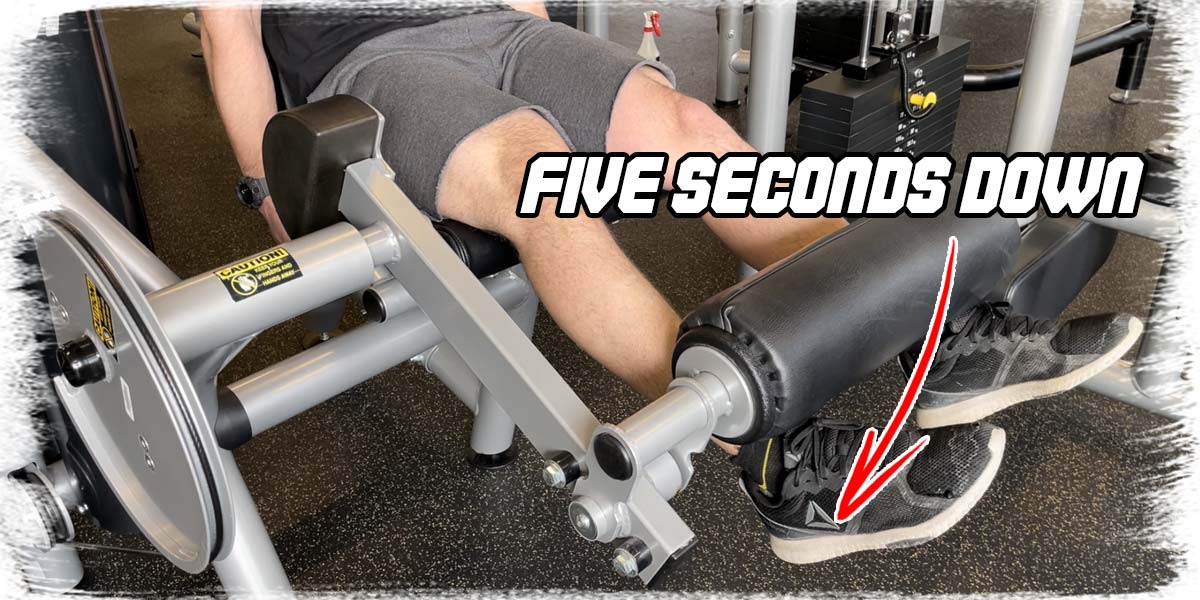
To get started with a generalized approach to tempo training, try performing your leg extensions (or other exercises) using these parameters:
- Aim to complete 10 – 12 repetitions using the steps below:
- Select a weight that’s approximately 50% of your overall maximal abilities (you’ll need to fine-tune the amount as you become familiar with this training style).
- Perform the concentric phase of the exercise (the portion of the movement where you contract your quads and straighten your legs) at a regular speed of movement.
- Take five seconds to slowly lower your legs back to the starting position.
- Immediately upon returning to the initial starting position, straighten your legs out again and repeat the process.
- Ensure that there is absolutely no time for your quads to rest throughout all of your repetitions. This equates to continuous tension on the muscles at all times during the set.
- Perform additional sets as required using the same parameters.
These parameters equate to approximately one minute of continual tension on your quadriceps muscles for each set. Your quads should thus be rather fatigued at the end of the set, all while using a lighter load throughout the process.
Double leg concentric with single leg eccentric
This is one of my favorite leg extension variations to perform. It’s especially beneficial to incorporate if your knee pain is only brought on with very heavy double-leg extensions or if your pain only occurs during the concentric phase of the exercise (i.e. the phase where you straighten your knees).
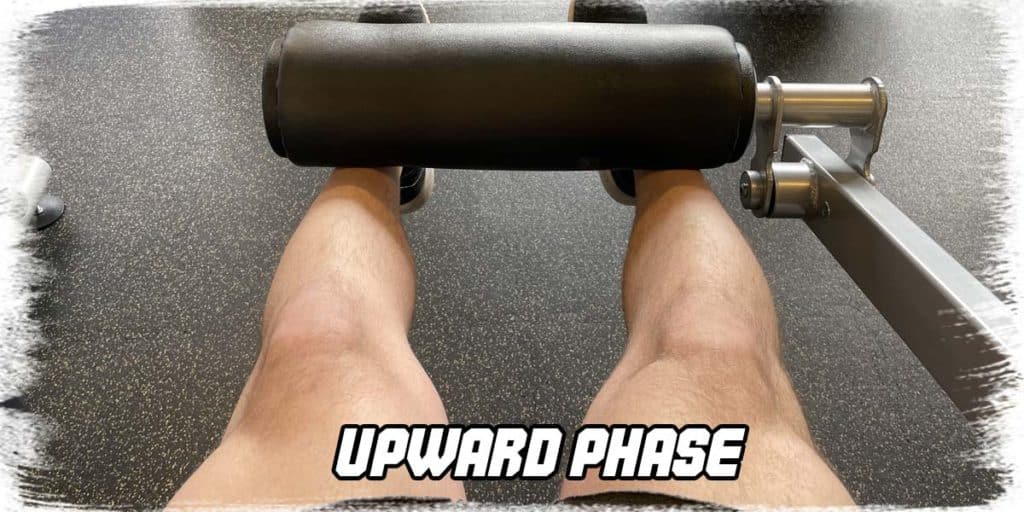
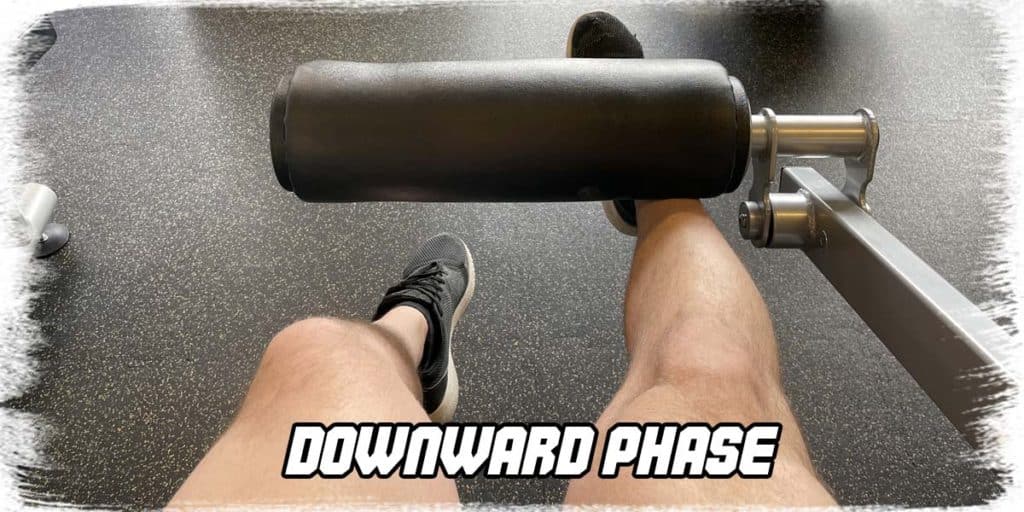
To perform this single-leg eccentric variation:
- Select approximately 50-60% of the weight you would otherwise use for your typical leg extension workout.
- Next, perform a full-range double-leg extension as you usually would (provided it’s pain-free to do so).
- Once your legs are at the end-range of movement, remove one leg from the leg rest and slowly lower your other leg against the resistance down to the starting position.
- Perform a double-leg extension again and repeat this process using the same leg.
- Once you’ve performed all repetitions with one leg, repeat the process using the other leg.
Pro tip: This variation can be a great way to heal and strengthen the patellar tendon if you’ve been diagnosed with patellar tendinopathy.
Limiting the range of motion
Though perhaps not ideal, if you’re absolutely dead-set on performing leg extensions at all costs, you can opt to perform the exercise with a limited range of motion. Depending on your individual condition, you might be able to perform a portion of the movement in a pain-free range.
Some evidence shows that performing leg extensions up to 45 degrees of extension can reduce load underneath the kneecap, which could be a potential variation you could opt for (assuming it’s pain-free for you) until you get your knees back to optimal health.8
While I would personally only opt for this strategy as a last resort (purely from a strength training perspective and not a rehabilitative perspective), you may find that it’s a solid strategy for you and one that your knees can tolerate. And it’s certainly better than nothing if you simply can’t live without performing leg extensions.
Blood flow restriction training
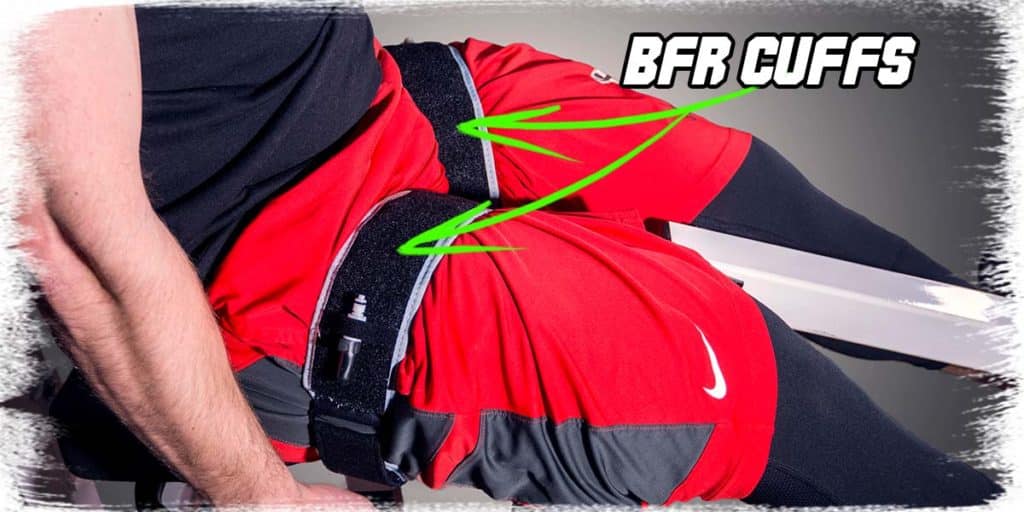
I’ve been saving this one for last, as blood flow restriction (BFR) training is arguably one of the most effective ways to increase quadriceps size and strength while training at light loads.
If you don’t know what blood flow restriction training or therapy is, you can read any of the following articles that I’ve written, which will bring you up to speed on all you need to know regarding what BFR training is, how it’s done and what science has been finding with its effects.
Related articles:
- Blood Flow Restriction: Evidence and Uses for Injury Rehabilitation
- What is Blood Flow Restriction Training? How, Why and When to Use it
Unlike traditional strength training, which requires an individual to lift loads at approximately 60-70% of their maximal abilities to increase muscle mass and strength, BFR training can elicit the same effects in the legs using loads of only 20-30%.9–13
Having done my graduate thesis on this topic, I’ve researched it extensively over the years while using it on numerous patients in the clinic and clients within the gym. I’ve had great success with it and, when appropriate, opt for using it in various aspects of lower extremity rehabilitation.
Like any other training intervention, it’s not appropriate for everyone. Still, literature shows that it’s quite safe in otherwise healthy populations, both young and old. It’s relatively simple to perform and has been shown to be effective for rehabilitative purposes and general strength training purposes.
Related article: In-Depth Product Review: B Strong BFR System (What You MUST Know)
Final thoughts
The leg extension machine has a notorious reputation for being brutal on the knees; however, it’s a reputation that’s not entirely warranted. No single piece of fitness equipment is ideal for everyone, and any piece of equipment can cause pain if used with improper parameters.
Now that you have been armed with some newfound information, take the insight and tips within this article and try incorporating them into your path forward for helping your knees to become healthier and happier when performing leg extensions.
As always, train hard, but train smart!
References:

Hi! I’m Jim Wittstrom, PT, DPT, CSCS, Pn1.
I am a physical therapist who is passionate about all things pertaining to strength & conditioning, human movement, injury prevention and rehabilitation. I created StrengthResurgence.com in order to help others become stronger and healthier. I also love helping aspiring students and therapists fulfill their dreams of becoming successful in school and within their clinical PT practice. Thanks for checking out my site!

